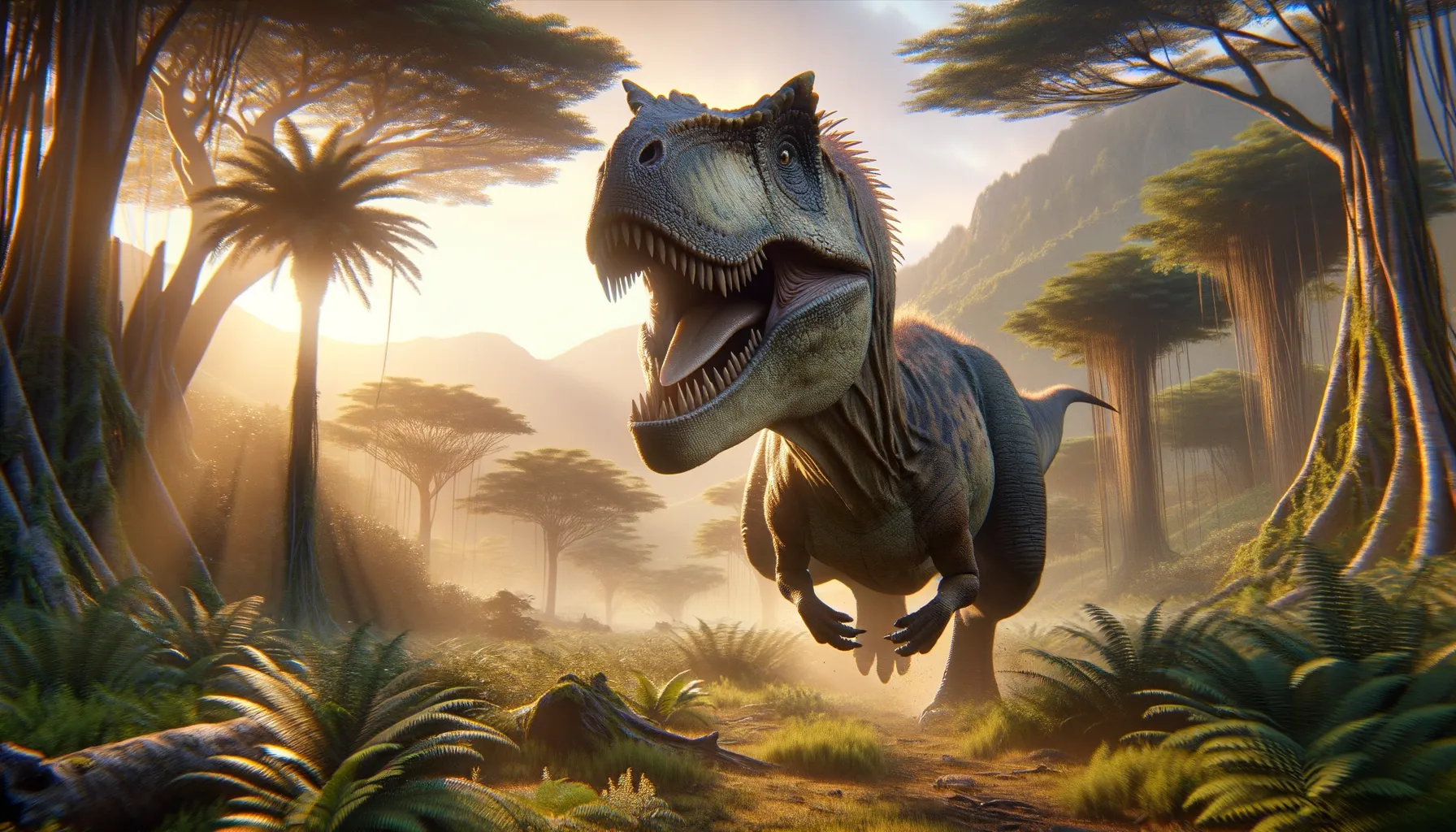
Bayosaurus
Swift predator of ancient Argentina's plains.
Period
Cretaceous
Length
Around 3 meters in length.
Height
Approximately 1.5 meters tall.
Weight
Roughly 50 to 60 kilograms.
Bayosaurus was a small theropod dinosaur that roamed the land masses of what is now South America during the Cretaceous period. With a build suggesting agility, this carnivorous dinosaur likely played a role as a swift predator, preying on smaller animals. Its fossils, although not completely discovered, give us valuable insights into the diverse ecosystems of its time and its place within the evolutionary path towards modern birds.
Diet
Bayosaurus was likely carnivorous, feeding on smaller vertebrates. Its diet might have included insects, small reptiles, and possibly other small dinosaurs.
Hunting
As a relatively small predator, Bayosaurus might have relied on stealth and speed to catch prey. Its agility would have been a crucial advantage in pursuing fast or evasive targets.
Environmental challenges
Bayosaurus faced various environmental challenges, including shifts in climate and ecosystems that defined the Cretaceous period. Changes in vegetation might have influenced prey availability and distribution. Additionally, competition with other predatory dinosaurs likely shaped its adaptation strategies. Natural disasters or drastic environmental shifts could have periodically impacted its habitat and resources.
Speed
Likely agile, adapted for quick bursts.
Lifespan
Estimated to be several decades.
First discovery
Discovered in Argentina in 2006.
Fun Facts
- Bayosaurus was discovered in Argentina and lived during the Late Cretaceous period around 90 million years ago.
- The name 'Bayosaurus' translates to 'Bayo's lizard', named after the site where it was discovered, Bayo Mesa.
- It is thought to be a small theropod dinosaur, closely related to carnivorous dinosaurs like Velociraptor.
- Bayosaurus is known from very fragmentary remains, including parts of the pelvis and vertebrae.
- Despite limited finds, Bayosaurus provides valuable insight into the diversity of South American theropods.
- This dinosaur helps paleontologists understand the evolution and distribution of theropods in prehistoric Gondwana.
Growth and Development
Bayosaurus, like many small theropods, would have experienced rapid growth during its early years. Fossil evidence suggests a relatively fast maturation rate, enabling it to quickly reach a size that decreased vulnerability to predators. Once matured, Bayosaurus would have maintained its agility, which was a crucial aspect of its survival and hunting efficiency.
Habitat
Bayosaurus inhabited diverse environments within the ancient landscapes of South America. It likely preferred wooded areas with ample cover, which provided both hunting grounds and protection. Riverbanks and open plains might have served as strategic locations for finding prey. The varied ecosystems of its time offered a mix of resources, sustaining its predatory lifestyle.
Interaction with other species
Bayosaurus likely interacted with both predators and prey within its ecosystem. It might have faced competition from similarly sized theropods. Its presence would have influenced the behavior and distribution of smaller animals. Interactions would have been shaped by natural hierarchies, with larger predators potentially posing a threat.
Natural lifespan
The natural lifespan of Bayosaurus may have reached several decades if it survived the challenges of its environment.
Reproduction
Bayosaurus likely reproduced by laying eggs, as is common among theropods. Nesting sites might have been carefully selected to ensure safety from predators. Parental care could have been minimal, typical of many dinosaur species, but select fossil evidence suggests some may have exhibited protective behaviors.
Social behaviour
Bayosaurus might have displayed solitary behavior, as many small theropods tend to operate independently. Instances of social behavior could have occurred, particularly during mating seasons or resource-rich periods. Interactions with other dinosaurs in its niche would have been primarily competitive.
Fossil locations
Fossils of Bayosaurus have been predominantly found in Argentina, providing key insights into South American theropod diversity. These discoveries help reconstruct the ecological dynamics of the region during the Cretaceous period. The fossil record remains limited, offering a tantalizing glimpse into a fascinating species.
